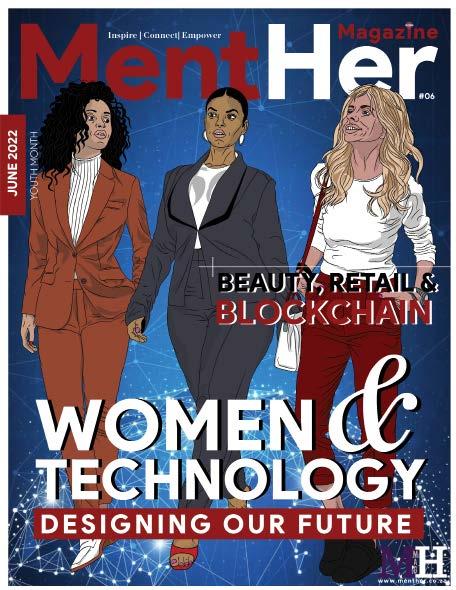
8 minute read
STRATEGY
BUILDING HIGH PERFORMING TEAMS
Advertisement
Have you ever hired the best individuals in your business and then struggled to get them to deliver? Or have you had team members who don’t seem to understand their Key Performance Indicators (KPIs) – who are good at delivering coffee, but fail to deliver their reports on time? Or do you sometimes feel that your team is pulling in every direction except forward? After some time, it may seem like a visit to HR might be the best (and only) solution.
Candice Pillay | Director Norton Rose Fulbright SA
But before you consider resorting to drastic solutions like replacing individuals who are not working well in your team, consider implementing a good management tool that will enable you to understand your team and work to their strengths. The leadership development model developed by psychologist Bruce Tuckman in 1965 theorised that there are four necessary and inevitable phases that a team will need to grow through to face challenges, find solutions, plan work and deliver results.
The first phase is the FORMING phase.
Every team must come together as a collective unit. However, every time a new member joins the team, the group identity will change and a so-called ‘new’ group or team is formed each time. In this phase, it becomes evident that the team members are independent individuals, who bring new thoughts and ideas on how to deliver on team goals and on their own responsibilities, to the collective unit. At every meeting, the entrepreneur will be able to
identify the independent thinkers, the group leaders, the delegators and the executers. While initial sessions of a new project are stimulating and exploding with ideas, there must come a time for decisions to be made and the project to start moving in a chosen direction. To grow from this stage, it is important that team members must be willing to let go of established positions (and hierarchies) and deal with conflict.

This then leads to the next phase:
STORMING
This is a vital step in the growth of the team that, ironically, builds trust. As personalities clash with each other, confrontation and disputes are inevitable. How these disputes are resolved will give the entrepreneur a good idea of the strengths and weaknesses of each team member. The integrity of the individuals will also be tested and the commitment to acting in the best interest of the team or the business will also be confirmed. However, it is important, that disputes are resolved timeously and efficiently to create the boundaries that team members require in order to move forward with each other in a common direction. This is the phase that can also be the most exhausting for the entrepreneur and if not dealt with correctly, can lead to the loss of very good candidates to other job opportunities and/or deplete morale in the team.
NORMING is the phase and process when team members establish and respect boundaries, recognise each other’s strengths and weaknesses and begin to work collaboratively.
This process will reflect a lot of camaraderie, team building and goodwill. It may well be that at this point, the team is in the process of finalising their projects and every member is making their contribution. The danger in this phase is that the team may now be getting along so well that there is no longer the robust debate or testing of ideas that existed during the earlier phases, for fear of losing the relationships built.
The final phase of team development is known as the
PERFORMING
phase. This occurs when the team can now work together as a high-performing homogenous group. In the performing phase, the team understands their mandate, as well as the quality of work expected from them. By this stage, the team has acquired the requisite skillset to meet its deliverables consistently. In the performing phase, team members will take on established roles and the team will perform at a high level, requiring little supervision from the entrepreneur.
This is not the end of the story. There will be times when the team may revert to the storming stage over new projects. However, this is part of the leadership development process and must be managed properly.
It’s important to remember that a new team is effectively created whenever a new team member, leader or manager enters the fray. Most conflict that arises when new members join the team stems from the fact that they struggle to fit into the existing team structure. Therefore, it is important for the team to grow through the four phases, whenever a new member joins the team.
What can you do as an entrepreneur when building a workforce or a team to support your business?
In a start-up, team growth is organic. Let’s consider a hypothetical example: an entrepreneur starts her business alone and over time, acquires the assistance of a family member or friend who becomes her ‘trusted’ business ally. By the time she is ready to take on her first paid employee, a ‘team’ has already been established between her and the trusted ally. When the new employee is hired, their entrance creates a new team, as well as a new team identity and thus, the entrepreneur must identify the four phases for the team to grow through together. Considering that this process is repeated every time the entrepreneur takes on a new team member, she needs to be an effective ‘change manager’ in that team.
What can the entrepreneur do to ensure that each phase is managed correctly?
In the forming phase, an entrepreneur must understand that she is dealing with a new team. She must have faith that she has employed the best people from diverse backgrounds and she must be open to explore the team’s differences in building her business. Her team members must also be given the space to grow, as well as a platform to express themselves. This is also a time to enforce the ground rules and KPIs that she expects from each of her team members. This is pivotal to team success – while it is important to have team goals, it is more important that there are individual goals that team members are held accountable to.
In the storming phase, there is likely to be a lot of confrontation, raised voices and dissenting opinions between team members.
Remember that individuals need to have a platform to express themselves; however, it is the entrepreneur’s responsibility to facilitate a safe and respectful environment for dialogue. The entrepreneur must spend time observing and noting character developments in her team members, as well as how individuals respond to conflict and to dispute resolution. Some individuals can resolve conflict on their own, whilst others can’t and will more often appeal to a more confident team member (or to the entrepreneur directly) to resolve conflict for them. Ultimately, the goal is to enable the conflicting team members to work together.
In the norming phase, the entrepreneur has little more to do, but supervise and give strategic direction to her team, from time to time. This is the phase where she will receive the greatest return on
her investments in the individual team members, as they make decisions and work together. While the temptation at this point is to focus on other projects or other areas of her business (or even take some personal time off) because the team is now working independently, it is important to remember that she ought to remain connected to her team in order to keep them focused on her goals.

During this phase, the entrepreneur must avail herself to connect with each team member, to offer mentorship and to identify individuals that she wants to grow in her business. In essence, the entrepreneur must be the ‘glue’ that holds the team together.
In the
performing phase, the entrepreneur can be truly proud of what she has achieved.
Once the team is achieving at its optimum level, and understands her business and vision, she is then free to grow her business or expand into other ventures. At this point, the entrepreneur can also focus on the growth of the individuals in her team that have shown great promise to propel her business forward.

Ultimately, happy and engaged employees lead to optimum productivity, so a little effort to understanding how the team dynamic is changing can be a huge investment in the business’s future.
SUBSCRIBE
AND STAND A CHANCE TO WIN
in leadership UNSPLASH Photo by: Christina @ wocintechchat.com RANDOM SELECTION OF SUBSCRIBERS WILL WIN MENTHER MERCHANDISE SUBSCRIBERS GET TERMS AND CONDITIONS APPLY LATEST EDITION VIA WHATSAPP & EMAIL FREE Kholeka Mkhize YOU ALSO GET







+27 67 676 5404
SAVE US ON YOUR PHONE & WHATSAPP “hi” Access to Menther Updates
Coupons from selected retail stores
Win Prizes in every edition
NATIONAL DIRECTOR JABU TEMBE WITH A MOBILE HOME SOLAR SELF POWER UNIT
Join the network and you could soon be featured in Menther Magazine










